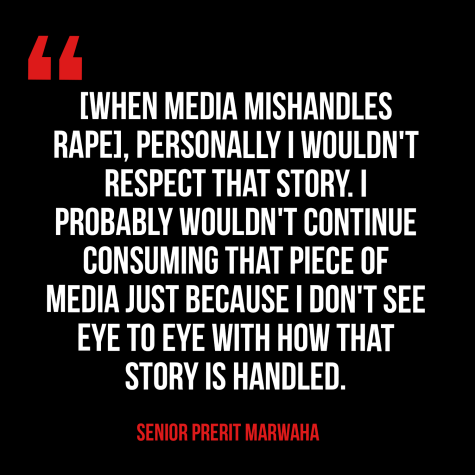A problem with industry
September 19, 2022
While supporting the argument of showing over telling, Marwaha cites the anime “Redo of Healer” as a prime example of a show showcasing sexual violence in gratuitous and sexist manner. The plot follows a male protagonist who has been sexually assaulted and goes back in time in order to revenge-rape his various female assaulters. When doing so, he also manipulates and enslaves them to get pleasure out of his experience. With the anime being critically panned for its sexist portrayal of women, Marwaha states that the glorification of rape in the show proved to be the prime motivator for him to stop watching it.
“[When media mishandles rape], personally I wouldn’t respect that story,” Marwaha said. “I probably wouldn’t continue consuming that piece of media just because I don’t see eye to eye with how that story is handled and therefore I probably wouldn’t enjoy the story. I didn’t really like [the depiction of sexual violence in Redo of Healer] and it seemed to be done more for the pleasure of the viewing audience in a revenge sort of way.”

The sexualization of female characters in Japanese anime stands as an ever present problem for MVHS ‘21 alum Patrick Nguyen, as they are often attached to a body image that Nguyen finds harmful. His issues are further emphasized by the fact that much of this sexualization finds itself in “shonen” magazines, which are geared towards young boys and teenagers ages of 12-18. Furthermore, with the genre being oversaturated with sexualized content, Nguyen feels desensitized from encountering scenes where women are objectified.
“You see a lot of sexist stereotypes being perpetuated through [manga and anime], like women always being in the kitchen or the over-sexualization of women in anime,” Nguyen said. “It’s a very old fashioned thing, which is pretty uncomfortable, at least for me, and it’s just not something that I feel is really beneficial to anyone at all. It perpetuates sexist stereotypes and it doesn’t bring anything to just constantly showing off disproportionately drawn women’s bodies in a fictional setting. It’s just completely out of hand.”
He especially pins down his experiences with desensitization watching the popular shonen anime “Sword Art Online,” where in one of the later episodes a major character is sexually assaulted. Nguyen, while still taking attention to the trigger warning at the beginning of the episode, felt uncomfortable with the scene but ultimately was unsurprised with the direction that the showtook, despite the sequence being depicted in a negative light.
Chauhan also builds on this idea, stating that the male dominated sphere of the anime and Western dark fantasy genre is an important part of how sexist ideas permeate throughout these spaces. She finds that while many shows accurately depict the brutality of sexual violence, the establishment of key power dynamics between men and women are heavily skewed as a result.
“I always hear about women going through these sorts of situations in public where some men would come really close to them or someone would grab them,” Chauhan said. “And I feel like these sort of shows perpetuate that whole [idea] that women can be anything to a guy when that’s not true. I feel like these shows are perpetuating that belief with all these scenes of women being preyed upon and going through [traumatic experiences].”

















